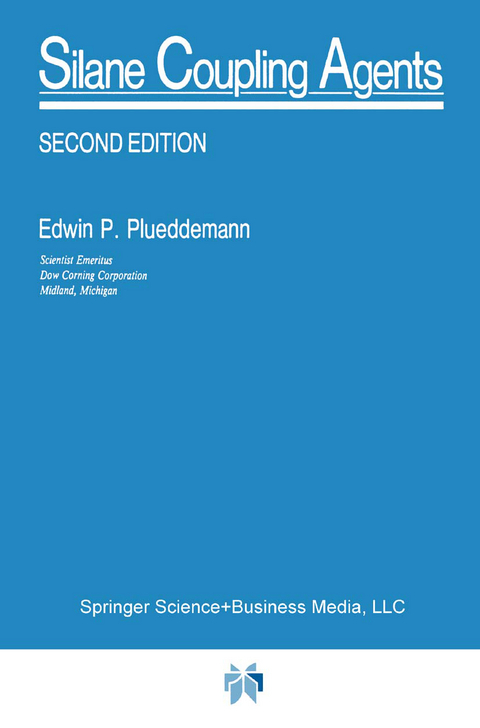
Silane Coupling Agents
Seiten
2013
|
2nd ed. 1991. Softcover reprint of the original 2nd ed. 1991
Springer-Verlag New York Inc.
978-1-4899-2072-0 (ISBN)
Springer-Verlag New York Inc.
978-1-4899-2072-0 (ISBN)
* Much progress has been made in the last 8 years in understanding the theory and practice of silane coupling agents. A major advance in this direction was the measurement of true equilibrium constants for the hydroly sis and formation of siloxane bonds. Equilibrium constants for bond reten tion are so favorable that a silane coupling agent on silica has a thousandfold advantage for bond retention in the presence of water over an alkoxysilane bond formed from hydroxy-functional polymers and silica. In practice, the bonds of certain epoxies to silane-primed glass resist debonding by water about a thousand times as long as the epoxy bond to unprimed glass. Oxane bonds of silane coupling agents to metal oxides seem to follow the same mechanism of equilibrium hydrolysis and rebonding, although equilibrium constants have not been measured for individual metal-oxygen silicon bonds. This suggests, however, that methods of improving bond retention to glass will also improve the water resistance of bonds to metals. of standard coupling agents with a hydrophobic silane or one Modification with extra siloxane cross-linking have improved the water resistance of bonds to glass and metals another hundredfold over that obtained with single coupling agents.
1. General Concepts.- 2. Chemistry of Silane Coupling Agents.- 3. Aqueous Solutions of Silane Coupling Agents.- 4. Surface Chemistry of Silanes at the Interface.- 5. Nature of Adhesion Through Silane Coupling Agents.- 6. Performance of Silane Coupling Agents.- 7. Particulate-Filled Composites.- 8. Other Applications of Silane Coupling Agents.
| Zusatzinfo | XIII, 253 p. |
|---|---|
| Verlagsort | New York |
| Sprache | englisch |
| Maße | 155 x 235 mm |
| Themenwelt | Naturwissenschaften ► Chemie ► Analytische Chemie |
| Naturwissenschaften ► Chemie ► Anorganische Chemie | |
| Naturwissenschaften ► Chemie ► Organische Chemie | |
| Naturwissenschaften ► Chemie ► Physikalische Chemie | |
| Technik ► Maschinenbau | |
| ISBN-10 | 1-4899-2072-2 / 1489920722 |
| ISBN-13 | 978-1-4899-2072-0 / 9781489920720 |
| Zustand | Neuware |
| Haben Sie eine Frage zum Produkt? |
Mehr entdecken
aus dem Bereich
aus dem Bereich


